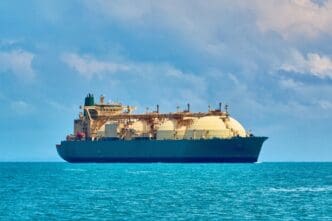Executive Summary
The Story So Far
Why This Matters
Who Thinks What?
Europe faces a deepening reliance on liquefied natural gas (LNG) imports, particularly from the United States, to meet its energy demands this winter, driven by lower gas storage levels and reduced pipeline flows from Russia and Algeria. Analysts project the continent will require up to 160 additional LNG cargoes, totaling approximately 16 billion cubic meters, to navigate the colder months, pushing total LNG imports to 820 tankers this year, up from 660 in 2024. This surge means LNG will account for 48% of the EU’s total gas supply, a significant increase from just 10% a decade ago and 23% in 2021.
Growing U.S. Dominance in EU LNG Supply
The United States is poised to become an even more critical supplier, with projections indicating it will provide around 70% of Europe’s LNG between 2026 and 2029, an increase from 58% this year. This growing dependency comes as the EU plans to ban Russian LNG from 2027 and Russian gas from 2028. U.S. gas production and export capacity are expanding, while other global suppliers face limitations, solidifying America’s role in Europe’s energy security.
This reliance has sparked some unease, particularly following actions by the Trump administration to impose tariffs on trading partners, including the EU. Despite these tensions, European utility executives acknowledge the limited alternatives for securing gas supplies.
Market Dynamics and Price Volatility
The shift towards LNG imports introduces greater price volatility compared to long-term pipeline contracts. Spot LNG prices are subject to external risks, such as fluctuating Chinese demand, which can lead to significant price swings and deter strategic stockpiling. This dynamic complicates Europe’s energy outlook, according to Arne Lohmann Rasmussen, head of research at Global Risk Management.
Meanwhile, Europe’s domestic gas production, particularly from its top supplier Norway, is expected to gradually decline. Imports from Algeria have also fallen, further increasing the need for LNG.
Storage Levels and Winter Outlook
European gas storage levels stood at 82.75% capacity as of October 4, equivalent to 944 terawatt hours. This marks a decrease from 94.32% at the same time last year and represents the lowest level since 2021. Experts predict that by the end of the current winter in March 2026, storage volumes could fall to a seven-year low of 29% of capacity.
Lower pipeline supply and increased reliance on LNG will necessitate more substantial storage withdrawals and injections in the future, according to Florence Schmit, an energy strategist at Rabobank. Such low storage levels could introduce a significant risk premium to EU gas prices in 2026, as noted by Energy Aspects.
Key Takeaways
Europe’s energy landscape is undergoing a significant transformation, characterized by an increasing reliance on LNG, predominantly from the United States, to compensate for reduced pipeline flows and declining domestic production. This shift introduces greater market volatility and places additional pressure on gas storage management, with projections indicating potentially low storage levels by the end of the winter season.








